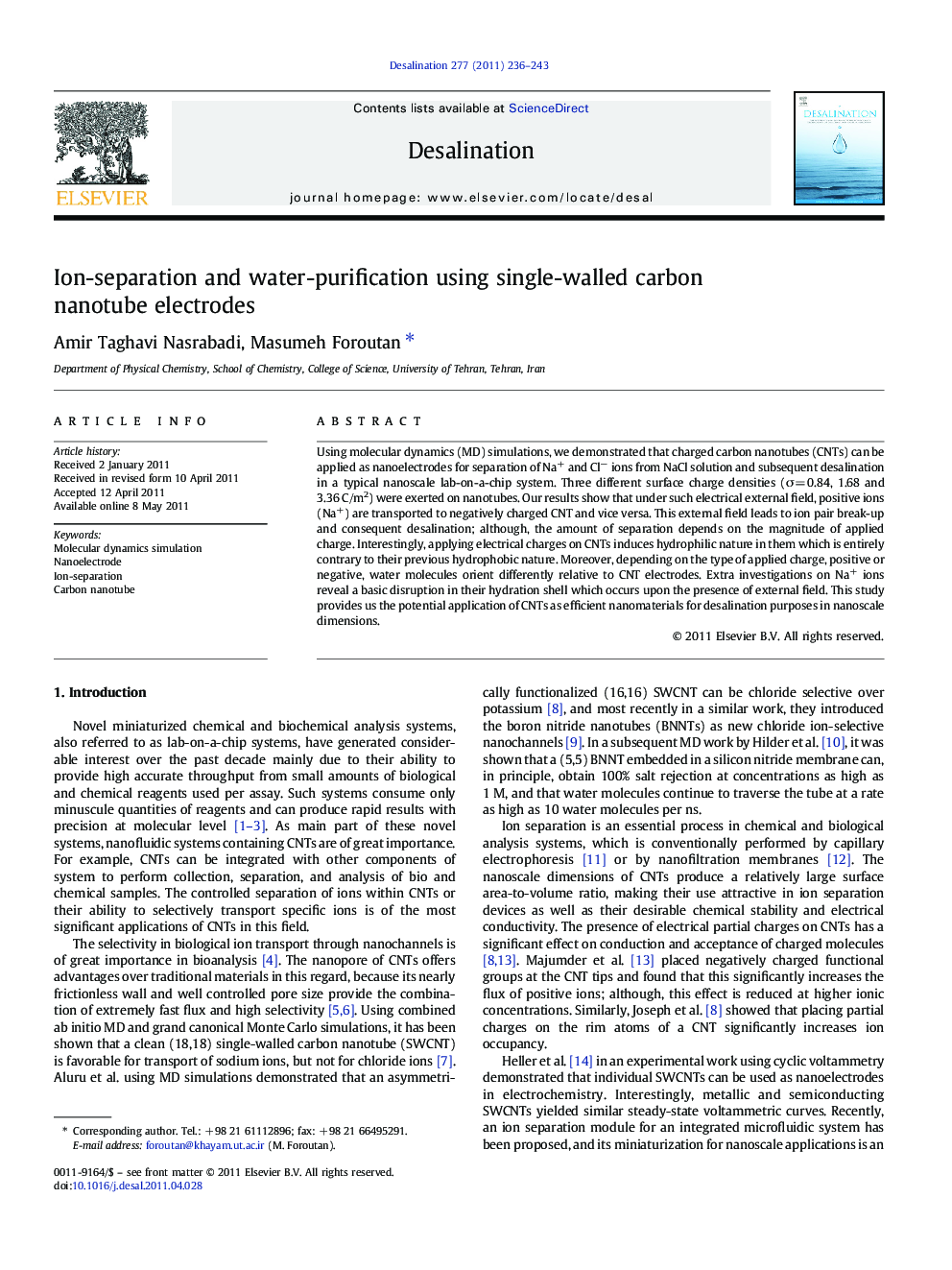| Article ID | Journal | Published Year | Pages | File Type |
|---|---|---|---|---|
| 625030 | Desalination | 2011 | 8 Pages |
Using molecular dynamics (MD) simulations, we demonstrated that charged carbon nanotubes (CNTs) can be applied as nanoelectrodes for separation of Na+ and Cl− ions from NaCl solution and subsequent desalination in a typical nanoscale lab-on-a-chip system. Three different surface charge densities (σ = 0.84, 1.68 and 3.36 C/m2) were exerted on nanotubes. Our results show that under such electrical external field, positive ions (Na+) are transported to negatively charged CNT and vice versa. This external field leads to ion pair break-up and consequent desalination; although, the amount of separation depends on the magnitude of applied charge. Interestingly, applying electrical charges on CNTs induces hydrophilic nature in them which is entirely contrary to their previous hydrophobic nature. Moreover, depending on the type of applied charge, positive or negative, water molecules orient differently relative to CNT electrodes. Extra investigations on Na+ ions reveal a basic disruption in their hydration shell which occurs upon the presence of external field. This study provides us the potential application of CNTs as efficient nanomaterials for desalination purposes in nanoscale dimensions.
Research highlights► Carbon nanotubes adsorb more amounts of oxygen rather than nitrogen from air. ► Such selective adsorption results in separation of oxygen from nitrogen. ► Carbon nanotubes are considered as promising gas-filtering systems in addition to their previous gas-storage capability. ► Increasing the temperature is accompanied with the reduction of gas adsorption.
